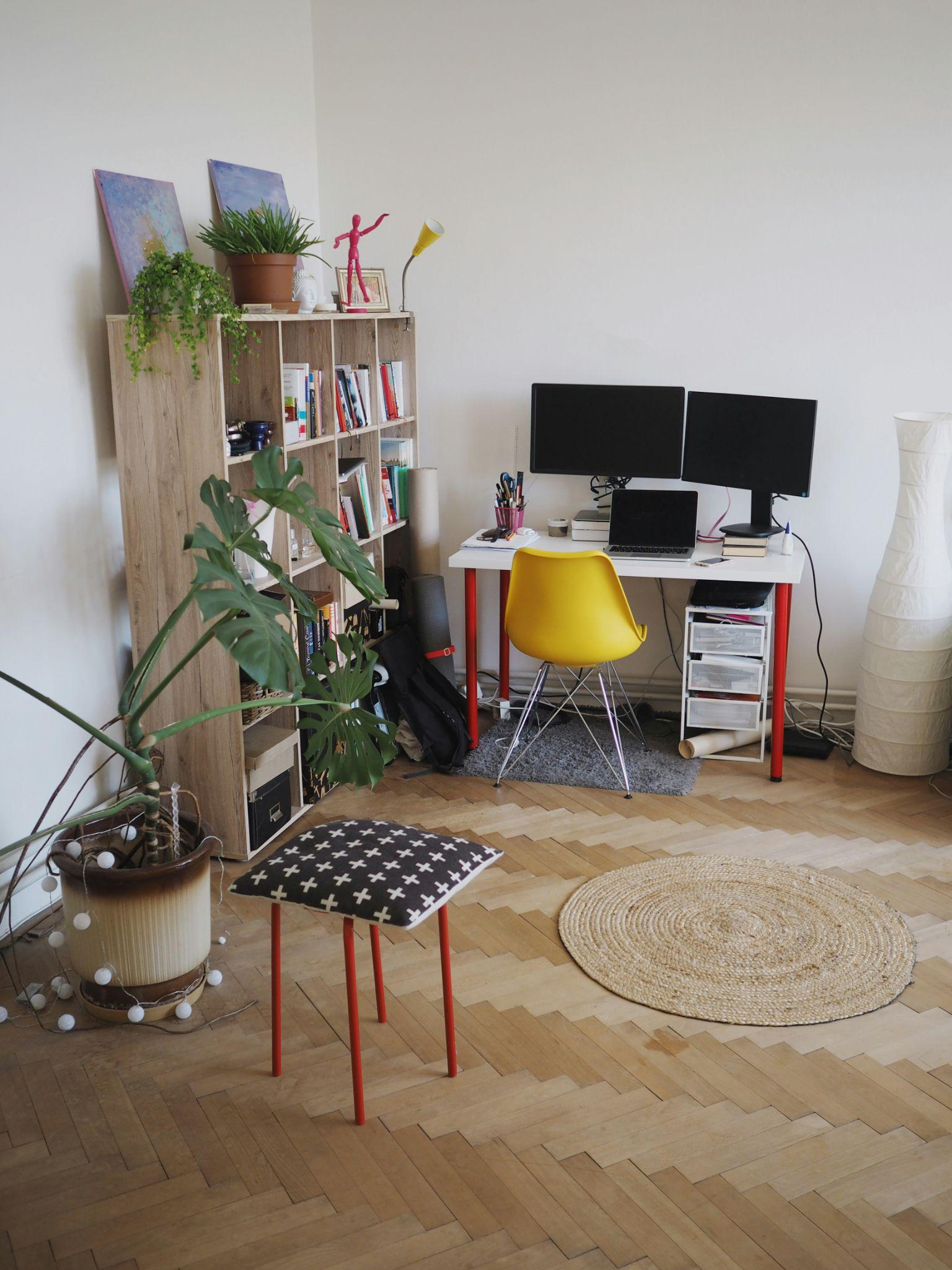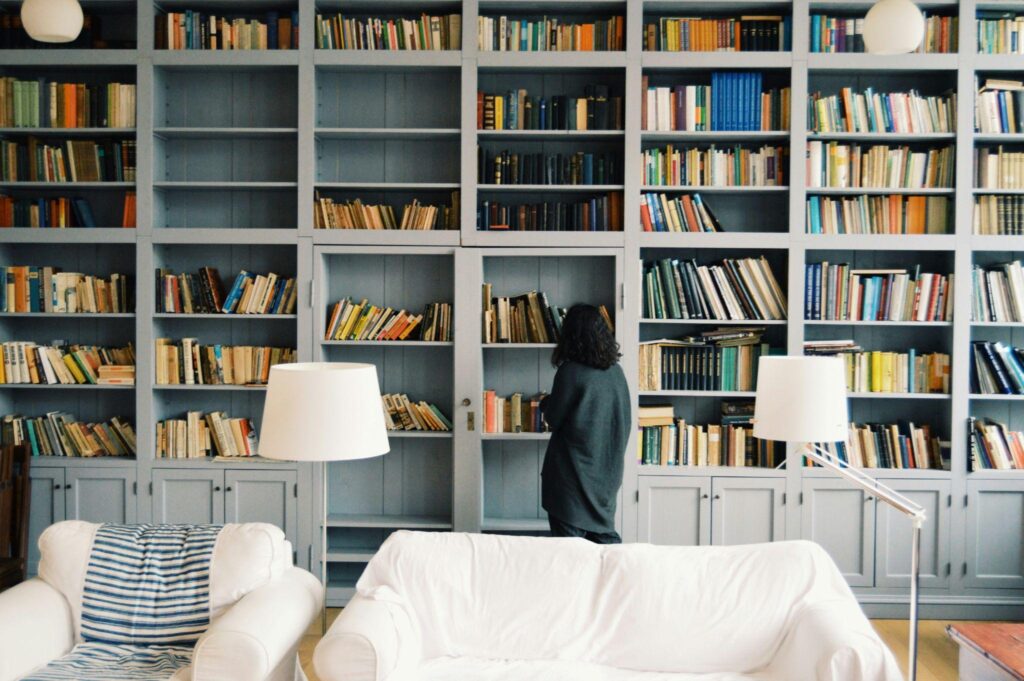There’s something incredibly grounding about having your own reading space at home a corner where you can slow down, disconnect, and get lost in pages. Whether you’re a lifelong bibliophile or just starting to collect your favorite titles, designing a home library isn’t about how many books you have. It’s about creating a space that reflects your personality, complements your home, and invites you to unwind.
In recent years, the home library has evolved from the classic wood-paneled room into a more personal, stylish retreat.
Open layouts, multifunctional spaces, and aesthetic bookshelves are all part of what makes today’s home libraries both modern and cozy. It’s less about grandeur and more about feeling at home in the space you read.
1. Rethink the Purpose: It’s More Than Just Storage
For most of us, bookshelves are not merely about functionality they’re about narrative. Each spine that’s visible tells us something about ourselves. That’s why contemporary domestic libraries are combining aesthetics and experience. Rather than concealing books, individuals are welcoming open shelving, floating shelves, and floor-to-ceiling structures that integrate with the visual story of a room.
Think outside the norm. Some homeowners are incorporating reading spaces into unused spaces: under stairs, along a hallway wall, or even repurposing a closet as a small literary retreat. It’s not about square space but about intention.
2. Use Lighting to Set the Mood
Adequate lighting is a game-changer. Whether you’re reading a book on a drizzly afternoon or browsing through magazines at night, having layers of light makes all the difference. Begin with sunlight it’s always ideal. But if your area isn’t bathed in much sun, don’t fret.
Think wall sconces over your shelves, a show-stopping floor lamp, or even LED strip lighting hidden under each shelf. Not only do they assist you in reading in comfort, but they can also accentuate the beauty of your collection. Warm, soft lighting has a tendency to emit that welcoming, bookstore ambiance.
3. Choose Shelves That Reflect Your Style
Your shelves are the workhorse of your library, but they don’t have to be dull. Contemporary styles embrace all sorts of materials, from raw wood and matte black metal to glass or even acrylic. What’s most important is that the shelves suit your lifestyle.
If you constantly switch up your collection or change out new reads, opt for adjustable shelves. Prefer the look of a curated, streamlined environment? Opt for a single-column bookshelf with space to insert decorative pieces such as framed photographs, artwork, or plants.
4. Make It Multi-Functional

Those are the good old days when a home library was a strictly formal, no-touch room. Homeowners today desire rooms that can be used for more than one function. Your reading area can also be a guest room, home office, or even meditation area.
Integrated benches with stowed storage below, alcove-width desks, and fold-away daybeds are smart solutions to make your library more functional without sacrificing its character. And with work-from-home arrangements the new standard, a library-office hybrid makes both sense aesthetically and practically.
5. Bring in Texture and Warmth
To get your home library to feel cozy instead of sterile, layering is the thing to do. Ponder soft rugs, chunky knit blankets, and overstuffed armchairs. Include personal touches perhaps a framed letter from a pal, your favorite scented candle, or destination souvenirs that bring back memories.
Books can be emotional, and your library should reflect that. Let it be a space where you’re comfortable relaxing, sipping tea, or simply zoning out for a bit.
6. Go Vertical When Space Is Tight
If space is limited, taking things vertical with your shelves is one of the most brilliant design decisions. Tall, thin shelving units maximize wall space and create an illusion of height in tiny rooms.
You may also place ladder-style shelving, which leans against the wall and provides a minimalist look without cluttering the floor. With a stylish stool or miniature step ladder, it is both functional and fashionable.
7. Add Personality with Art and Decor

Not all shelves need to be filled with books. Indeed, mixing up your collection with decorative items can make your library feel curated instead of chaotic.
Put a small sculpture in between books, place a framed art print against a shelf, or collect a few coffee table books and layer a ceramic vase on top. This type of styling turns your home library into an extension of your living area, not a hidden, untouched room.
8. Keep It Flexible for the Long Term
Your reading preferences could shift. Perhaps you’re into books these days, but a couple of years later, you’ll be all design books or cookbooks. Adding flexibility to your design future-proofs your library.
Go for modular shelving units or bookshelves that are easy to reconfigure. If you’re a renter, select easy-to-move units without drilling. Conceptualize your home library as something that develops and improves with you.
9. Get Inspired by Your Lifestyle
Do you primarily read in the evenings? Do you listen to audiobooks? Are you attempting to create a peaceful family reading tradition? Your library’s layout should align with the way you live.
For instance, if you enjoy reading with a cup of coffee, organize a corner with a mug cart for your favorite cups and blends. If you share your books with children, reserve a lower shelf just for them, with plush floor pillows nearby. It’s these lifestyle elements that personalize the space and make it yours.
10. Don’t Be Afraid to Start Small
If the idea of a full-fledged home library feels overwhelming, start small. One shelf. One chair. One corner of your living room. The beauty of modern library design is that it doesn’t have to be big to be meaningful.
As your collection grows, so can your space. Over time, you’ll find what works, what doesn’t, and what makes your personal reading rituals feel more intentional and enjoyable.
A contemporary home library is more about creating a personal haven than it is about constructing a grand space. It’s about carving out room for rest, curiosity, and quiet delight. Whether you have one wall or a room, careful design through lighting, shelving, and personal decor can transform any space into a comfortable retreat for book lovers.
And when your home library looks as lived-in and loved as the stories that fill it, that’s when your library really feels like home.

